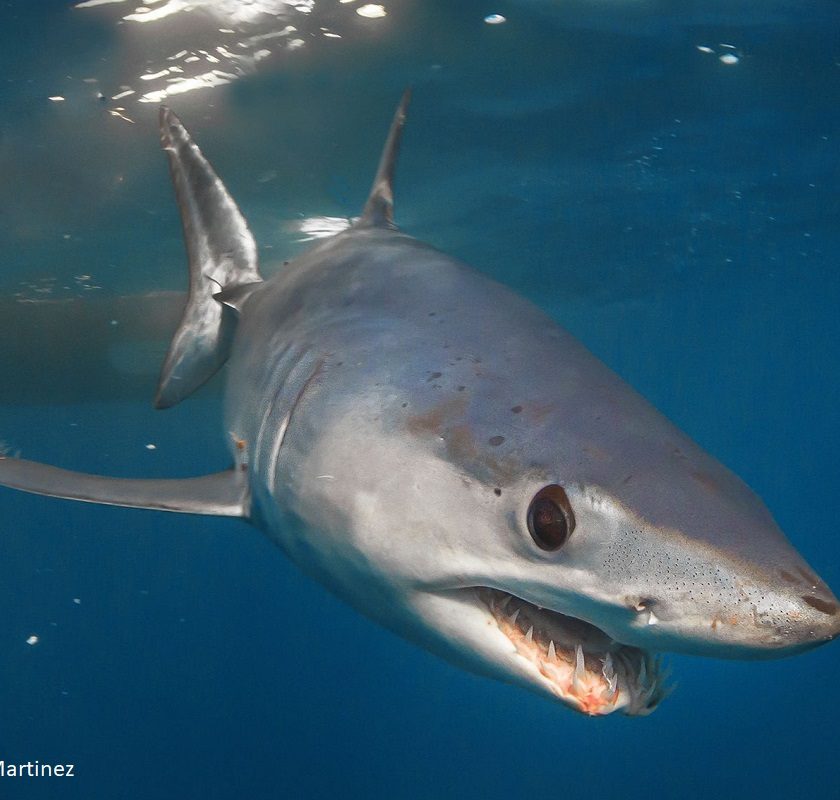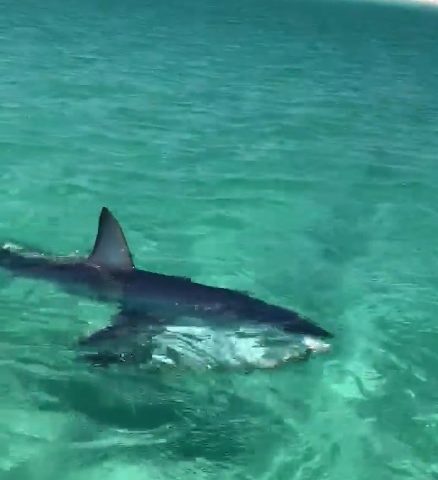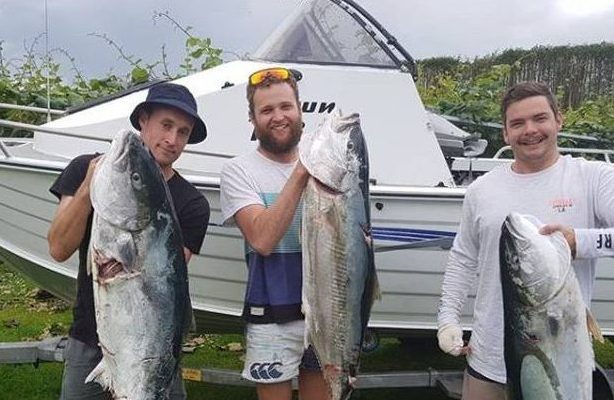Estimated reading time: 9 minutes
Have you ever wanted to freedive with mako sharks? The fastest shark in the sea can be hard to find, but there is one group who will try their hardest to get you in the water with the shark.
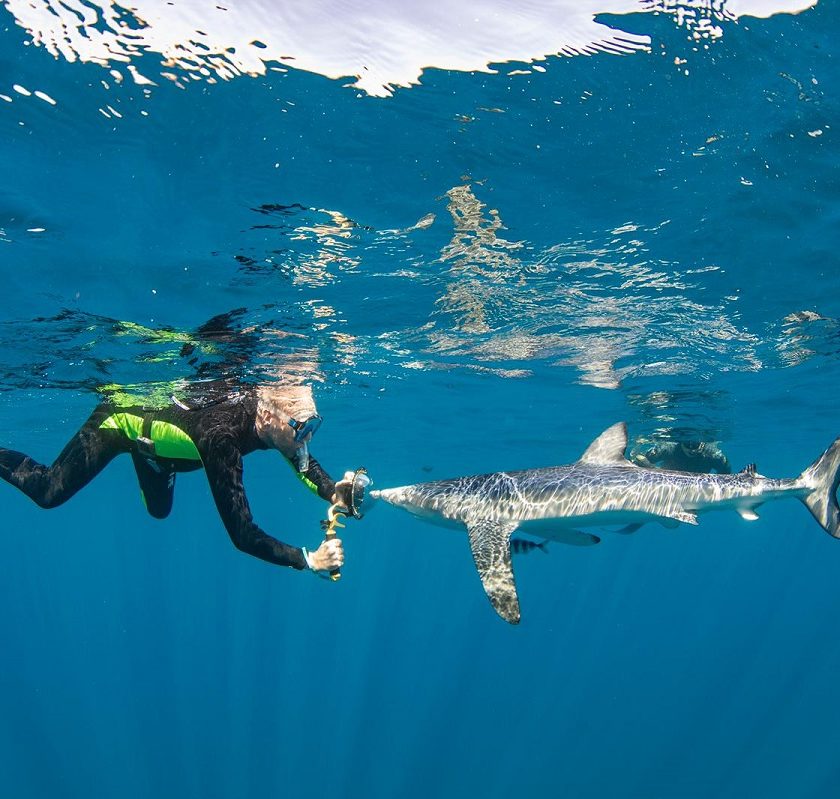
The region at the southernmost tip of the narrow tongue of Baja California has blossomed into one of the most exclusive holiday regions in Mexico. The town of Cabo San Lucas is now known as a paradise for relaxation, nightlife and sunbathing, but it can also show another side. If you are looking for an exciting, adventurous expedition in connection with nature, then you might consider daring to dive with pelagic sharks during your vacation.
Cabo San Lucas is one of the top shark diving destinations in the world. While diving with sharks in Cabo is not for the faint of heart, those who love an adrenaline rush will not be disappointed by this experience. With stunning diversity and a unique ecosystem, one can see why Cousteau dubbed this area “The Aquarium of the World.”
Diving in Cabo San Lucas offers almost everything. Off the coast of Cabo San Lucas Marine Park, two oceans merge into one, creating a hotspot for pelagic migration. Here you will find what is probably the highest concentration of mako, blue and silky sharks.
Despite humans not being items on a shark’s menu, there have been several deaths from shark attacks here in the Sea of Cortez in recent years. In 2017 Andres Fernandez was killed snorkeling in Cabo Pulmo, a year later the professional diver Nahum Verdugo Aguilera was fatally attacked off Sonora, and in February 2022 Victor Estrella, also a professional diver, was killed.
Two great white sharks and a tiger shark are said to have been responsible. These shark species can make the coastal waters unsafe.
Mako sharks, on the other hand, are considered pelagic sharks and rarely swim near the coast. Nevertheless, this shark species sometimes attacks. The International Shark Attack File has listed a total of twelve attacks on humans. Because of this and because of its speed and aggressiveness, the mako shark is classified as dangerous.
“Well, luckily you dive in a cage, nothing can happen there,” says my buddy soothingly when I tell him about my expedition.
“Uh, no, we dive without a cage,” I reply, looking into a startled face. “But at least there is no blood in the water, otherwise it would be dangerous,” he replies with concern. “Hmm, but there will be blood in the water, lots of blood,” I must admit. “To be precise: Fish waste, blood and tuna heads. We have to attract sharks somehow. It’s not a zoo out there where the animals are just waiting for you, it is pure wilderness,” I explain to him.
“Are you crazy?” he asks, his last words, before he walks away shaking his head.
I booked a 6-day expedition with Eli Martinez. The Texan offers all sorts of exciting scuba diving trips around the world, be it with anacondas in Brazil, sperm whales in Domenica or tiger sharks off the Bahamas. On such a journey with dangerous animals trust is, of course, the decisive criterion. And with Eli, I know I’m in good hands. After all I was with him two years earlier with the crocodiles in Banco Chinchorro.
Eli himself chartered the boat from Latitude Encounters, a young company consisting of Fernanda Nieto and Mathias van Asch. Fernanda is Mexican and Mathias is from Antwerp in Belgium. The two of them met and fell in love while diving – how could it be otherwise – and founded their company almost two years ago.
With me on the diving trip, there are four Americans and one man from Israel. But who talks about scuba diving? Because the expedition is not about actual scuba diving with an air tank and buoyancy compensator, here you just snorkel in blue water.
“Proper diving equipment is not necessary at all, since the pelagic sharks come to the surface of the water anyway and the bubbles from the breathing apparatus would only scare them away,” Eli explains during the briefing on the boat.
“In Cabo, water temperatures range from 20°C (68F) in February to 29°C (84F) in August,” Fernanda says. The rest of the year remains relatively temperate with the occasional thermocline causing a unique shimmering glass effect. We drive about 10-20 kilometers (7-12M) out to sea and then start chumming. That means we try to attract sharks with a mush of sardines, tuna/bonitos and mackerel. So, all fish that sharks like to eat here.
The sea is between 700-1,000 meters (2296-3280Ft.) deep out there. The topography of the sea floor is decisive: There are plateaus, canyons and peaks. We will drive to various points over the six days in order to find sharks.
The Sea of Cortez lies between the Baja California Peninsula and mainland Mexico. A UNESCO World Heritage Site, this stretch of the Pacific is one of the most diverse seas in the world and is home to more than 3,000 marine animals including hammerhead sharks, sea lions and turtles. In the previous month you could even snorkel with orcas on three different occasions and the year before you could swim with sperm whales. That’s why this trip is sold as an ocean safari because you can see everything. Of course, the focus is on the sharks, especially makos.
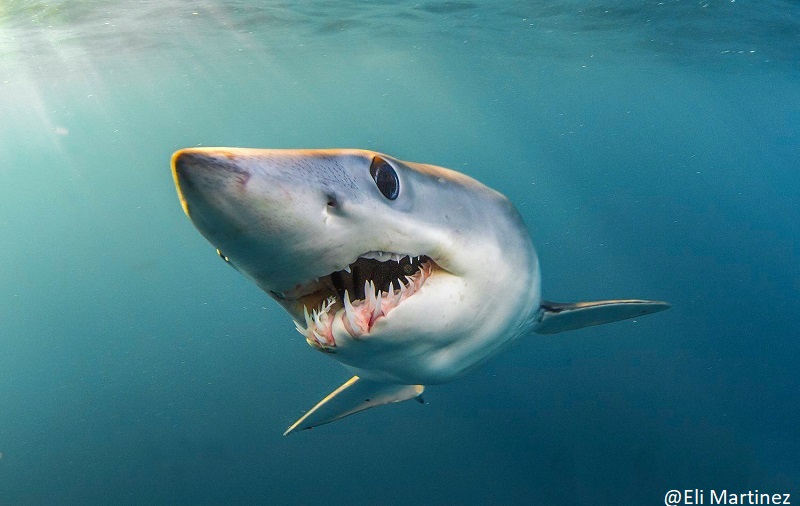
Silver bullet, torpedo with teeth, cheetah of the open–all nicknames for mako sharks are as imaginative as they are accurate. With a top speed of almost 80 km/h (50m/h), the mako shoots through the water like a bullet, making it the fastest of all sharks. They hunt seals, tuna and swordfish, also fast swimmers that dash through the oceans so quickly that no predatory fish can eat them—except the mako!
When it comes to endurance, the mako leaves other fish far behind. A tagged animal is said to have covered a full 2,000 kilometers (1242m) in 37 days. With a length of four meters and a weight of up to 590 kilograms (1300lbs), it flashes through the oceans like lightning. It can do this because it is perfectly hydrodynamically adapted.
With a slender body, a pointed head and short fins. The water offers them little resistance—so little that makos can even breach up to six meters (20ft) out of the water! If there were multi-story houses on the sea, a mako could peek through the third-story window with its wide eyes.
High, powerful jumps, fast sprints—this is made possible by its unusually smooth skin, which allows it to glide through the water. Thanks to its very special tooth-like scales, the mako can change direction very quickly, which makes it extremely maneuverable. Its skin therefore fascinates researchers all over the world as a model for new materials in aviation and seafaring.
Makos share their territory with blue sharks. The relationship between the two species is like that between lions and hyenas, which also live in the same territories but obtain their food in very different ways. Makos are the turbos in the sea. This power and speed is particularly popular with sports anglers.
Unfortunately, on our trips we also see 30-50 fishing boats almost every day. Big game anglers helping wealthy patrons land a big marlin or mako shark. If every boat catches only one big fish a day, you can easily imagine what that means for the ecology of the sea off Cabo.
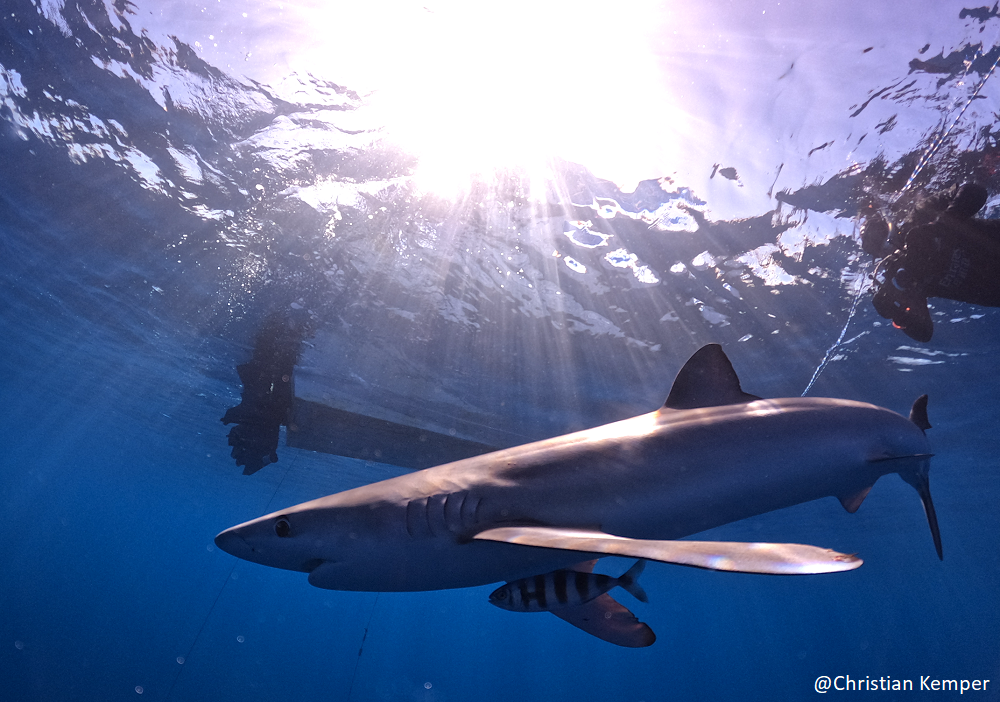
Blue sharks, on the other hand, tend to be more leisurely, eating squid and other slower prey. Fishing them is not considered a challenge. In the comparison, the blue sharks are the hyenas. And of course, everyone wants to kill the lion. Both shark species are on the Red List of Threatened Animals.
We start at 8 a.m. The exit from the port is already beautiful. We pass the famous Arch. The Hole in the Rock of Cabo San Lucas is a prominent rock formation on the southern tip of Cabo San Lucas, which is itself the extreme southern end of Mexico’s Baja California Peninsula.
Pelicans and sea lions accompany us on our way. A little farther out we encounter the first humpback whales. They let us get close, but never stay around the boat long enough for us to get in the water with them. After almost an hour and a half we reach our destination.
The engine is stopped, and the boat is placed sideways in the current. Mathias starts chumming to attract sharks. In addition, we throw a tuna head into the water on a rope that floats on the surface. A so-called torpedo, a container filled with fish waste, floats 30 meters (100ft) under the boat and another container with fish remains floats on the water surface next to the tuna head. Finally, Fernanda drops various metal plates into the water. Their flashing should also attract the sharks and keep them around the boat.
“We will probably get mako and blue sharks. Now is not the time for silky sharks or smooth hammerheads,” Fernanda explains.
“Blue sharks are very curious, they come very close to us divers and wiggle between us like a snake. They like the big underwater housings of the cameras and will surely bump against it. So, you must keep them at a distance: either with the cameras or with your hand slightly pushing their head away from above. Don’t press against the snout from below, that’s where they have their electroreceptors, and they could bite. It’s similar with the makos, only they’re much faster! Mako sharks are the only sharks I know that swim at you with their mouths open every time. So don’t splash around with your hands on the surface. They will think it’s a fish and could attack. You must keep your nerve,” he said at the last briefing.
Now it’s time to wait. Mathias tirelessly dumps the chum into the water every few seconds, the man has arms like a lumberjack. An hour goes by, but no shark can be seen. After 90 minutes still nothing. But after we near the two-hour mark the hoped-for call rings out over the boat: “Shark!”
Ocean Safari: Freediving with Mako Sharks part one. Click for part two.
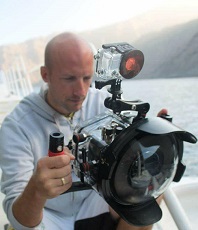
Christian Kemper is a TV journalist from Germany and freelance writer for three of the biggest diving magazines in Germany. He has been diving with and studying sharks for more than 20 years. The author has written two books about shark attacks and published his first English language book about sharks titled “The Fear Beneath.”
You can find his German Language book “Strange Pool Friends” on Amazon and at tredition.
